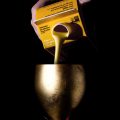
Easter. Chocolate bunnies, pastel colors, and… eggs? We’re so used to the colorful, candy-filled eggs that are a staple of Easter celebrations that we rarely stop to consider their origins. The tradition, however, is far stranger and more fascinating than you might imagine. It’s a journey through ancient pagan rituals, Christian symbolism, and a whole lot of egg-cellent cultural evolution.
The connection between eggs and springtime is ancient, predating Christianity by centuries. Many cultures associated eggs with fertility and rebirth, symbols perfectly aligned with the arrival of spring after the long winter months. Pagan celebrations often incorporated eggs as a symbol of new life and renewal, a potent image of nature’s cyclical power. Think of the egg as a tiny, self-contained world, holding the promise of something new within its shell – a powerful metaphor for the burgeoning life of spring.
The adoption of eggs into Christian tradition is less clear-cut, but likely involved a gradual process of syncretism. As Christianity spread, it absorbed and adapted many existing pagan customs and beliefs. The egg, already laden with symbolic weight, became a fitting representation of the resurrection of Christ, a new life emerging from the shell of death. The empty tomb, after all, is a powerful parallel to the empty eggshell.
Over time, the simple egg evolved into the elaborate, decorated creations we know today. The process of decorating eggs became a deeply ingrained tradition, with different cultures developing unique styles and techniques. From intricately painted designs to intricately carved shells, the egg became a canvas for artistic expression, reflecting the cultural identity and beliefs of the people who created them.
So, the next time you’re enjoying a brightly colored Easter egg, take a moment to appreciate its rich and surprisingly strange history. It’s a testament to the enduring power of symbolism, the blending of cultures, and the simple, yet profound, beauty of a humble egg.










